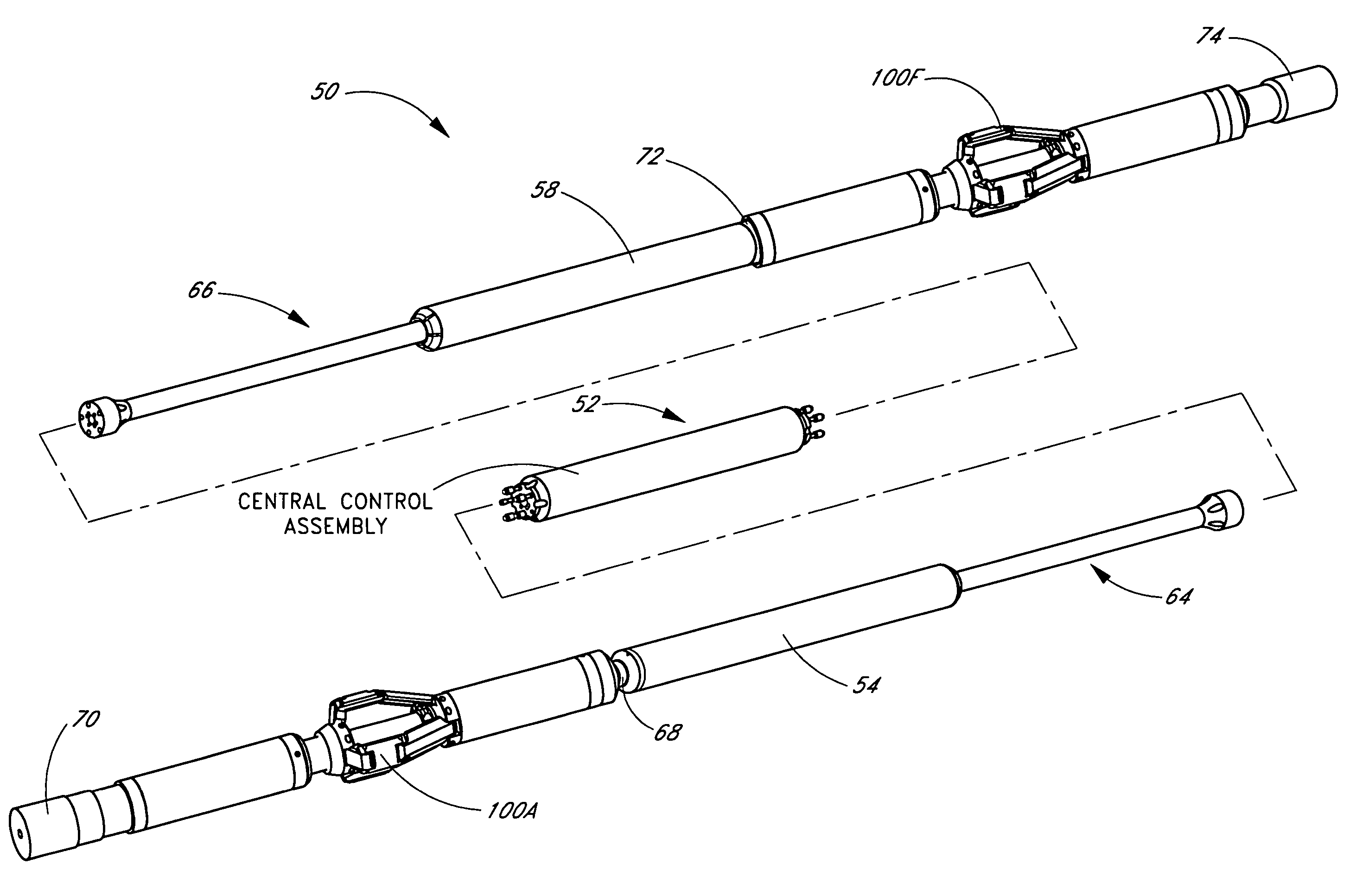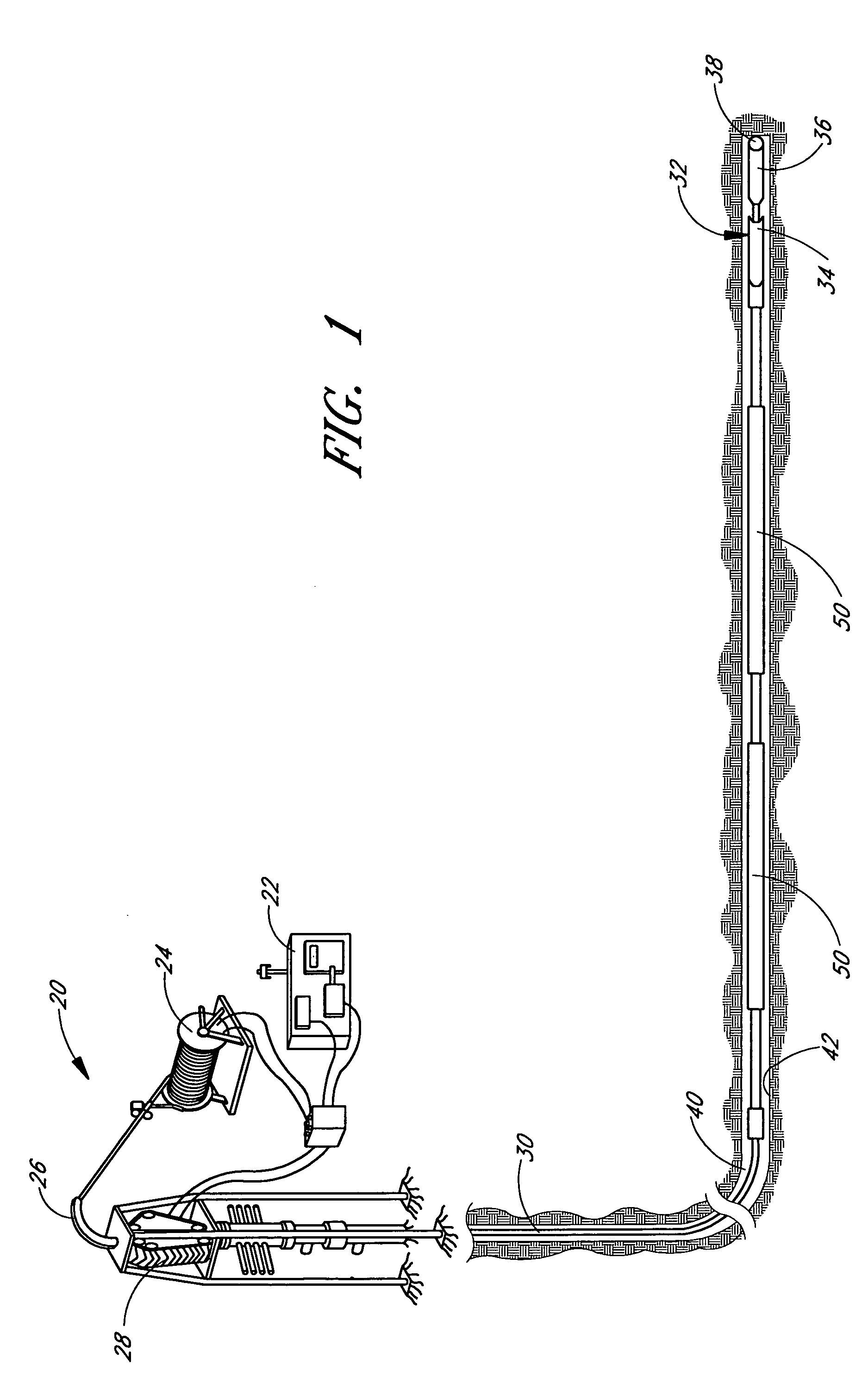Roller link toggle gripper and downhole tractor
a technology of roller link and toggle gripper, which is applied in the direction of borehole/well accessories, drilling pipes, drilling rods, etc., can solve the problems of premature failure of fiber termination, extent of diametrical expansion, and limited use of downhole tractors, so as to improve the life prevent the loading of the roller mechanism, and improve the operation of the gripper assembly
- Summary
- Abstract
- Description
- Claims
- Application Information
AI Technical Summary
Benefits of technology
Problems solved by technology
Method used
Image
Examples
Embodiment Construction
Coiled Tubing Tractor Systems
[0058]FIG. 1 shows a coiled tubing system 20 for use with two downhole tractors 50 connected by a drill string for moving within a passage. Connecting multiple tractors end-to-end may allow the use of smaller tractors, thereby facilitating maneuvering the coiled tubing system through a passage with relatively small radius turns. Although two downhole tractors 50 connected end-to-end are preferred in some applications, those of skill in the art will understand that a single tractor 50, or more than two tractors 50 could be used. Referring to FIG. 2, the illustrated tractor 50 has two gripper assemblies 100 according to the present invention. Although two gripper assemblies are preferred in some applications, those of skill in the art will understand that any number of gripper assemblies 100 may be used. In particular, one gripper assembly may be desirable, when a tractor is used in series with another tractor having two gripper assemblies. The coiled tubi...
PUM
 Login to View More
Login to View More Abstract
Description
Claims
Application Information
 Login to View More
Login to View More - R&D
- Intellectual Property
- Life Sciences
- Materials
- Tech Scout
- Unparalleled Data Quality
- Higher Quality Content
- 60% Fewer Hallucinations
Browse by: Latest US Patents, China's latest patents, Technical Efficacy Thesaurus, Application Domain, Technology Topic, Popular Technical Reports.
© 2025 PatSnap. All rights reserved.Legal|Privacy policy|Modern Slavery Act Transparency Statement|Sitemap|About US| Contact US: help@patsnap.com



